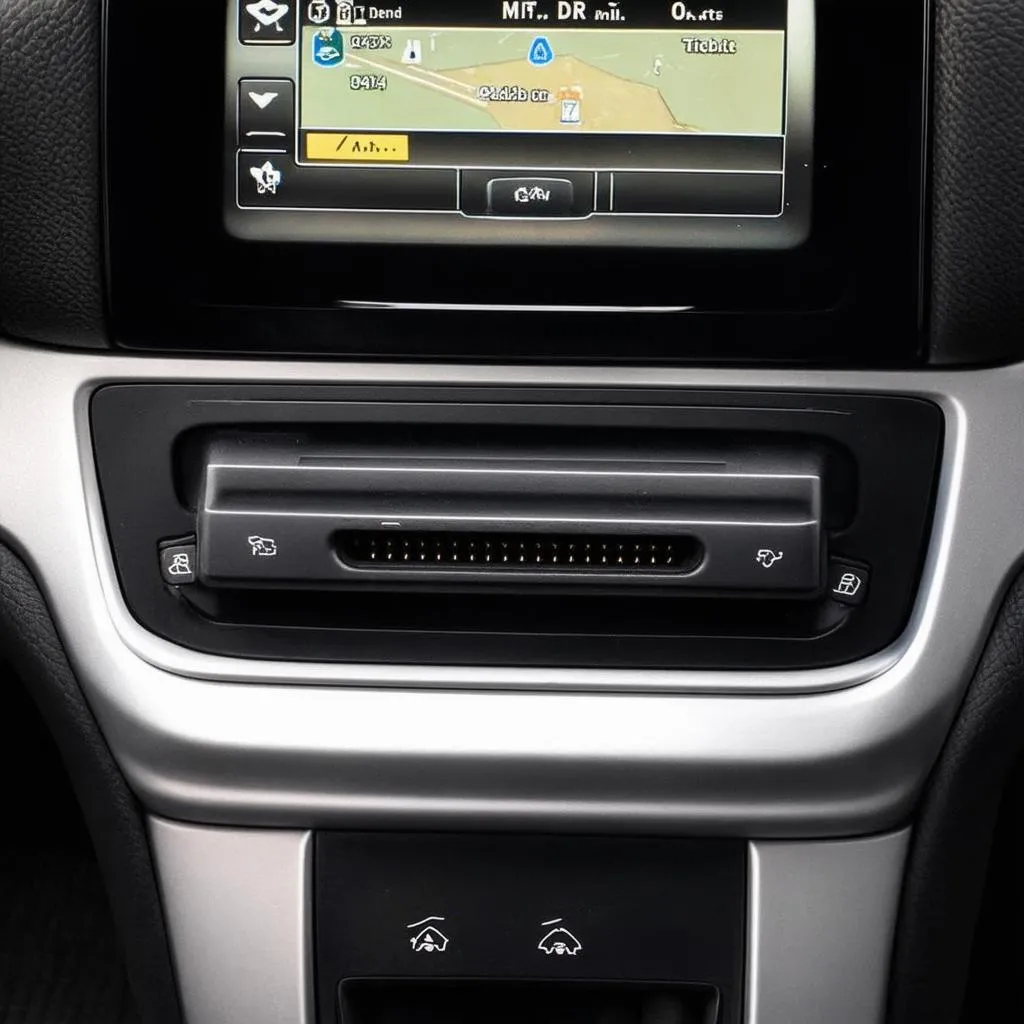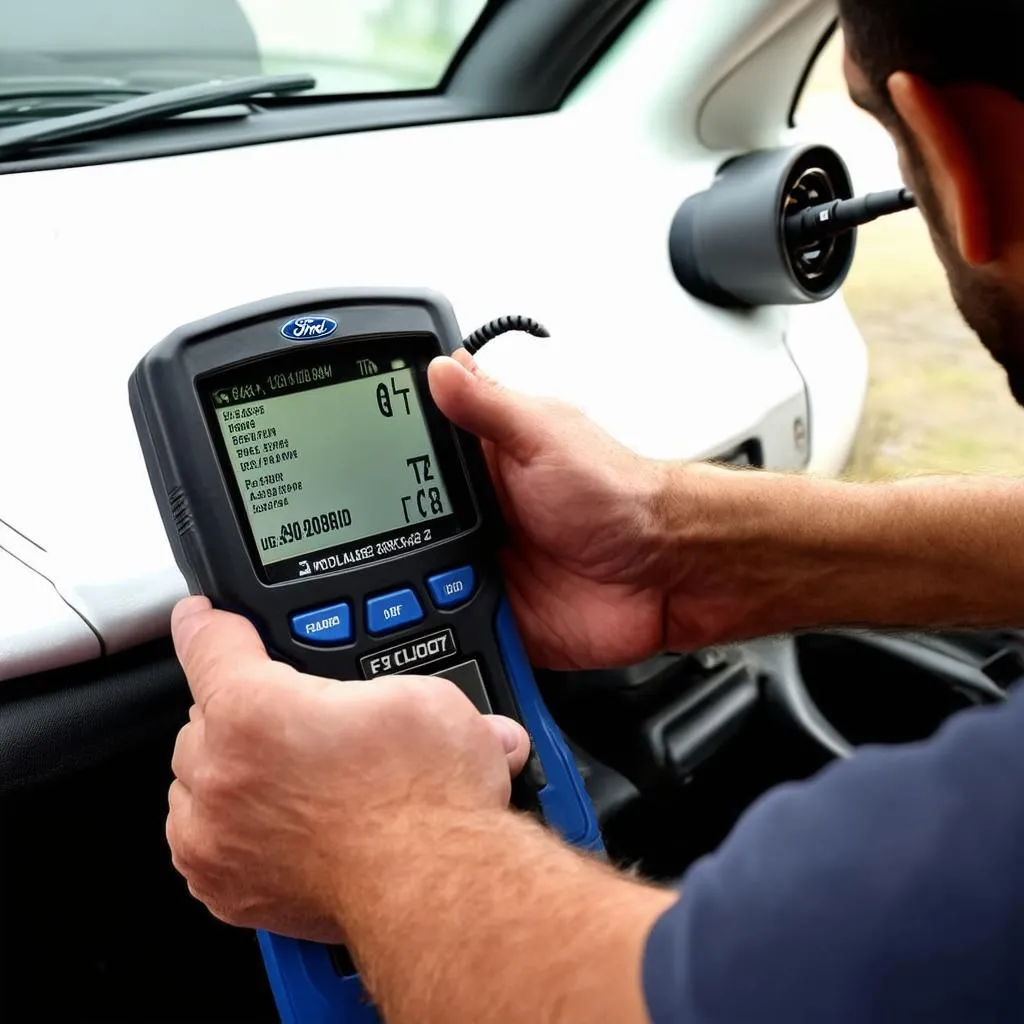“Check engine light staring you down again? Don’t panic, it’s just your Ford Explorer trying to talk to you!”
Ever wished your car could tell you exactly what’s wrong? Well, thanks to the OBD port, it can! This little port acts as your car’s communication hub, giving you access to a wealth of information about your vehicle’s health and performance. This article dives deep into the world of the OBD port on your Ford Explorer, covering everything from its location to its capabilities.
What Exactly is an OBD Port and Why Should I Care?
Imagine you’re experiencing a rough idle, and your trusty 2015 Ford Explorer is acting up. Instead of playing guessing games with expensive repairs, the OBD port, short for On-Board Diagnostics, allows you to connect a diagnostic tool (like a code reader or scanner) and decipher the issue. Think of it as a direct line to your car’s brain, revealing hidden codes that indicate specific problems.
But wait, there’s more! Beyond just reading engine codes, the OBD port opens a world of possibilities:
- Monitor Real-time Data: Curious about your fuel economy on that last road trip? The OBD port lets you track fuel consumption, engine speed, temperature, and a host of other parameters in real-time.
- Customize Your Driving Experience: Ever wished you could adjust your automatic door locks or tweak the sensitivity of your throttle response? For some Ford Explorers, the OBD port allows access to modify certain vehicle settings.
- Turn Off Annoying Warning Lights: Okay, maybe the “check engine” light is getting a bit too familiar. Once you’ve addressed the underlying issue, the OBD port can be used to reset the warning light, saving you a trip to the mechanic.
Locating the Elusive OBD Port on Your Ford Explorer
Finding the OBD port is usually a straightforward task, but it can sometimes feel like a treasure hunt depending on the year and model of your Ford Explorer. Fear not, adventurous Explorer owner! Here are some common hiding spots:
- Under the Dashboard: This is the most common location, often tucked away on the driver’s side beneath the steering wheel.
- Inside the Center Console: Some Ford Explorers may have the OBD port discreetly hidden within the center console compartment.
- Near the Fuse Box: Check your owner’s manual for the fuse box location, as the OBD port might be nearby.
 OBD Port Location in 2015 Ford Explorer
OBD Port Location in 2015 Ford Explorer
Common Questions About the Ford Explorer OBD Port
Can I use any OBD scanner on my Ford Explorer?
While generic OBD-II scanners can read basic engine codes, for more in-depth diagnostics and advanced functions, a scanner specifically designed for Ford vehicles is recommended. This ensures compatibility and unlocks the full potential of your Explorer’s diagnostic system.
What is the difference between an OBD-I and OBD-II port?
Ford, along with other manufacturers, transitioned to the OBD-II standard in 1996. If your Ford Explorer was manufactured after 1996, it will have an OBD-II port, which offers more standardized diagnostics and data access.
Can I damage my car by using the OBD port?
Rest assured, using the OBD port correctly will not harm your vehicle. Just ensure the engine is off before connecting or disconnecting any diagnostic tools and always use compatible and reputable equipment.
 Mechanic using an OBD Scanner on a Ford Explorer
Mechanic using an OBD Scanner on a Ford Explorer
A Deeper Dive: Advanced OBD Port Uses on Your Ford Explorer
For those seeking a deeper understanding of their Ford Explorer, the OBD port can be a gateway to a wealth of information:
- DIY Diagnostics and Repairs: Armed with the right scanner and some mechanical know-how, you can diagnose and potentially fix minor issues yourself, saving time and money. However, it’s essential to approach DIY repairs with caution and consult reputable repair manuals or seek professional help when needed.
- Performance Tuning: Certain OBD tools allow access to adjust engine parameters, transmission shift points, and other performance-related settings. This is especially popular among car enthusiasts looking to enhance their Explorer’s capabilities.
Beyond the Physical: Feng Shui and the Energy of Your Ford Explorer
While the OBD port operates in the realm of technology, some believe it also holds a connection to the overall energy of your vehicle. In Feng Shui, a car is considered an extension of your personal space.
Here are a few tips to harmonize the energy of your Ford Explorer:
- Keep it Clean: A cluttered and dirty car can invite stagnant energy. Regularly cleaning and decluttering your Explorer promotes a sense of clarity and flow.
- Set Intentions: Before embarking on a journey, take a moment to set positive intentions for your trip. Visualize a safe and enjoyable ride, and imagine your Explorer smoothly navigating the roads ahead.
Ready to Explore the Depths of Your Ford Explorer?
The OBD port is more than just a diagnostic tool; it’s a portal to a deeper understanding of your vehicle’s inner workings. By embracing its capabilities, you can unlock a world of knowledge, empower yourself with information, and potentially save yourself from costly repairs.
Need help navigating the world of OBD scanners and software? Our team of automotive experts is here to guide you. Contact us via Whatsapp at +84767531508 for personalized assistance and unlock the full potential of your Ford Explorer’s diagnostic system.